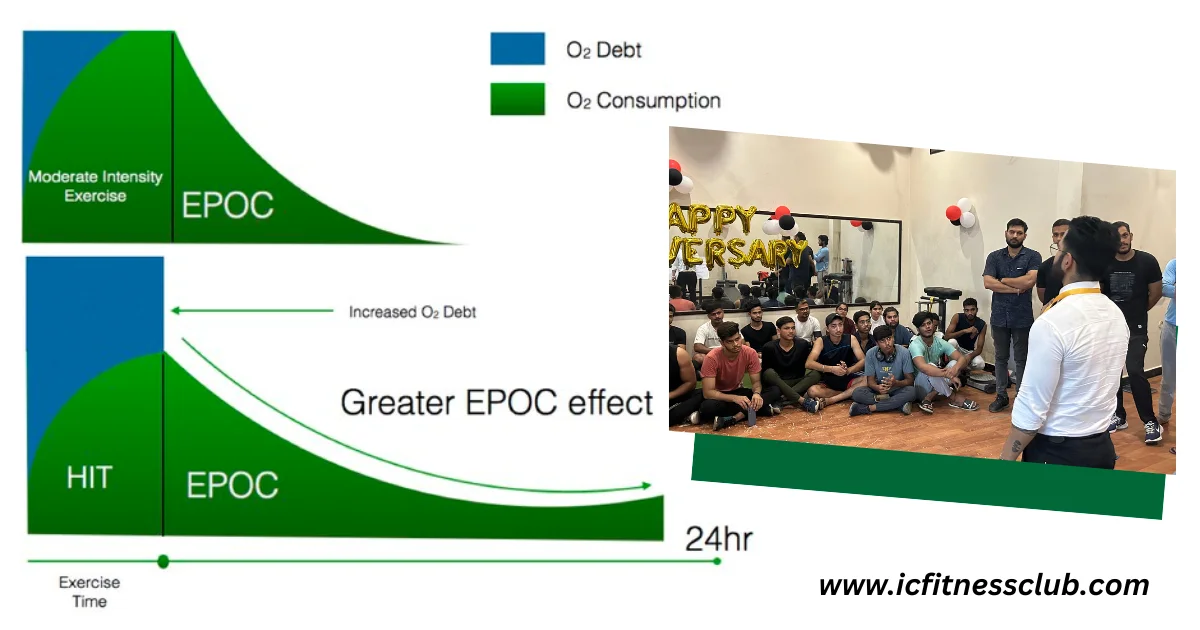EPOC-Excess Post-Exercise Oxygen Consumption – IC Fitness Club
EPOC stands for Excess Post-Exercise Oxygen Consumption, which is also sometimes referred to as the “afterburn effect.” It’s a physiological phenomenon that describes the increase in the rate of oxygen consumption that occurs after strenuous exercise.
When you engage in intense physical activity, your body requires more oxygen to meet the increased demand for energy. This oxygen is used during exercise to support various processes, including muscle contraction, energy production, and recovery.
After you finish exercising, your body doesn’t immediately return to its resting state. Instead, it continues to consume oxygen at an elevated rate for a period of time. This increased oxygen consumption is used to:
- Restore oxygen levels: Oxygen is needed to replenish the oxygen stores that were depleted during exercise. This process helps the body recover and return to its pre-exercise state.
- Clear metabolic byproducts: Intense exercise can produce metabolic byproducts like lactic acid, which need to be cleared from the muscles and metabolized. Oxygen is required for this process.
- Repair and rebuild: Exercise can cause micro-damage to muscle tissues. The post-exercise oxygen consumption helps repair and rebuild these tissues, contributing to muscle recovery and growth.
The magnitude and duration of EPOC can vary depending on several factors, including the intensity and duration of the exercise, individual fitness level, and genetics. High-intensity interval training (HIIT) and strength training tend to produce a more significant EPOC compared to low-intensity, steady-state exercises like walking.
EPOC is often cited as a factor in weight loss and fitness training because the additional calorie expenditure during the recovery period can contribute to overall energy expenditure. However, it’s just one component of the complex factors that influence weight loss and fitness goals. Diet, overall activity level, and individual metabolism also play crucial roles.





